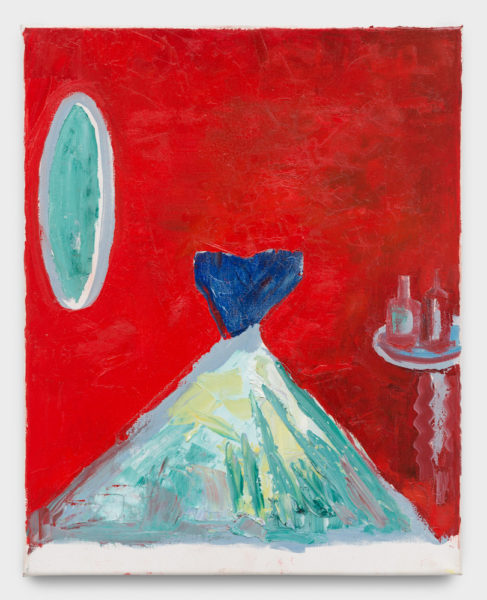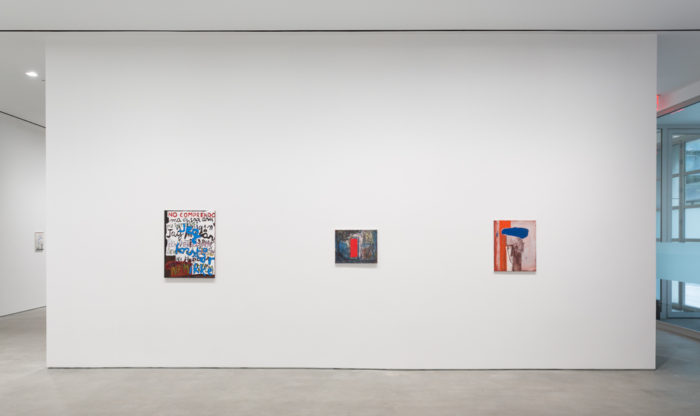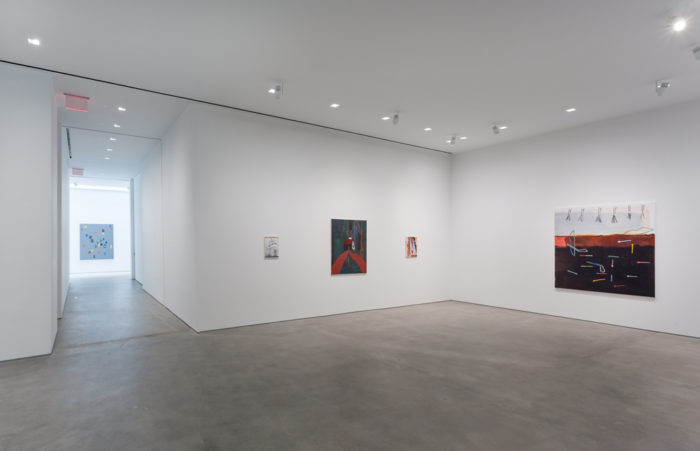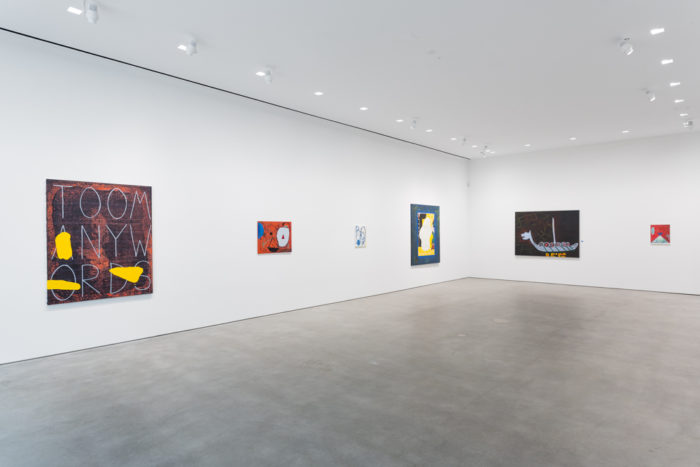
As the title of the exhibition implies, bewtie by veteran artist Walter Swennen, currently on view at Gladstone Gallery, is foremost concerned with a reinterpretation of concepts of language and aesthetics in art. Featuring an amalgam of text, abstraction, and appropriated pop cultural references, brought together in the mind of the artist, Swennen’s paintings are multi-layered compositions that provoke an analysis of how these various elements function in art and in our lives.
Drawing upon a multi-lingual upbringing in his native Belgium, bewtie, and Swennen’s work at large, draws upon a number of languages: French, Flemish, English. Among the most striking paintings, in their directness, are two works that read “Too Many Words.” This sentiment provides a succinct hint about how strongly language does indeed inform Swennen’s world view, while at the same time seriously and tongue-in-cheek the phrase implies that perhaps there is too much discourse and unnecessary words, both written and spoken, in the outside world. The larger of the two paintings, with its muddled dark background of black and red, seems relatively sober, while the smaller piece is executed in a bright and cheerful, almost child-like palette. In drawing attention to this idea – too many words, that is – with this duality seen throughout the exhibited works, Swennen’s exhibition provides a welcome reprieve from the never-ending chatter outside the gallery walls. Many of the other paintings that heavily employ language similarly suggest a hopefulness in escaping the confines of the spoken or written word, all while acknowledging the importance of communication in all of its forms: linguistic, pictorial, or otherwise.
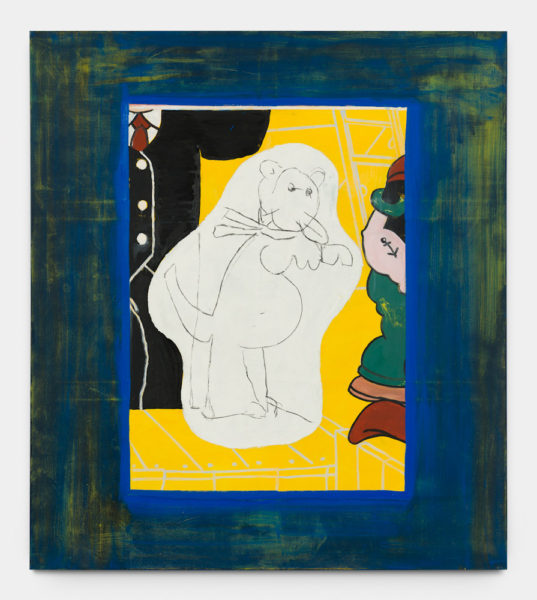
In terms of aesthetic beauty and technical prowess, the varied surfaces of the paintings betray Swennen’s masterful understanding of layering and color. Meanwhile, the inclusion of figures ranging from Popeye to a bathing classical beauty (boldly captioned with the word “bewtie”) lends a playful air to the show, and also serves as a nod to the range of Swennen’s artistic influences. Gestural marks scattered throughout the paintings suggest Cy Twombly, just as the occasional use of geometric abstractions throughout serves as an homage to much of twentieth-century art history.
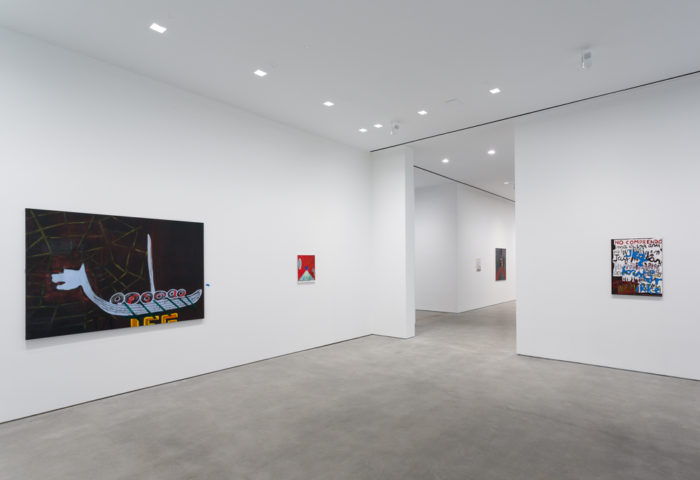
While some of the paintings are purely abstract, many at least imply a narrative. Drawing on cartoon-like figures, these works suggest the doodles of an imaginative child, portraying, in one instance, a Viking ship against the backdrop of a large spider web, or the animals, houses, and totemic figures that populate other works in the exhibition. In these more figurative works, Swennen successfully leaves enough clues to allow the viewer’s imagination to run free without explaining too much. There is a beauty in leaving only the bare essentials on view – perhaps this is what he means by “Too Many Words”?
In addition to the gems on view at Gladstone, White Columns is concurrently showing a retrospective of Swennen’s earlier works, providing a context for the work of this relative newcomer to New York (bewtie is his second solo exhibition at Gladstone, and in the United States). This dual exhibition model rightly celebrates Swennen’s masterful convergence of styles and subject matter. bewtie, in particular, allows for an appreciation of the artist’s mind, as the exhibition highlights a thread of the psychology of society and popular culture through the language of art, using the language of language itself.
Walter Swennen: bewtie at Gladstone Gallery
September 15 – October 28, 2017
New York | 24th Street

